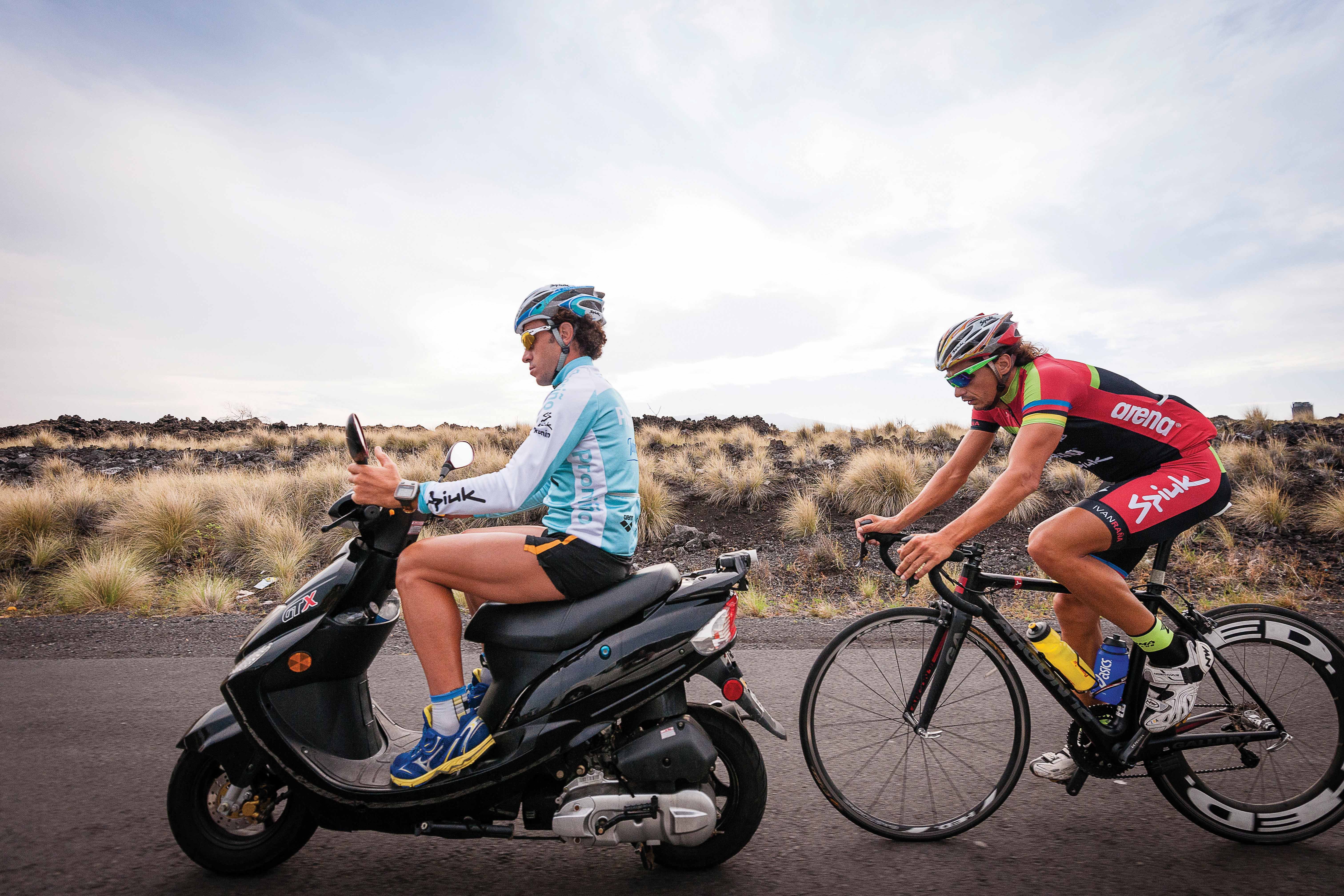What Role Can Motor Pacing Play In Triathlon Training?

Photo: John David Becker
Coach Michael Norton discusses how motor pacing can improve your abilities as a triathlete, and shares a few workouts he does with his athletes.
A: Think about it like this: There will always be athletes who are slower than you and others who are faster than you. It is the faster athletes who challenge you to push yourself to the next level. However, those faster riders can push you too much, and your exciting workout is over far too soon—with you getting dropped!
But imagine having the ideal training partner who will always be faster and better than you, but at the same time will work with you to steadily increase your bicycle pace as you develop. This is the idea behind motor pacing. Although motor pacing is utilized mostly by pro athletes, its benefits can also apply to the age-group triathlete given the opportunity to do it.
When competing in triathlons, whether sprints or Ironmans, the bike portion is a steady push to get to the run. As a coach, one of the most common areas I observe needing improvement is cadence on the bike. Far too often, competitors push too big of a gear at too low of a cadence. When this happens, too much torque is applied, overloading the muscular system and in the end causes the dreaded heavy leg feeling as the bike portion wears on then continues into the run. Power output is important, but velocity training is all too often overlooked. With motor pacing, we switch the dynamics of effort from pushing to spinning. Athletes can continually improve power output at high cadences of 90 to 120 RPM to condition the cardiovascular system and take the strain off the muscles. Apply this method in your training to avoid the bonk!
RELATED: The Benefits Of The Time Trial For Triathletes
How To Train With Motor Pacing
If you’d like to apply motor pacing to your training—and have the means to do so—be warned that it’s addictive and shouldn’t be used in training at all times. It’s best utilized in the final 3–6 weeks during the specialization phase right before top-priority events. If you are not fit enough to train at speed, motor pacing will not be beneficial enough to warrant the use. If you’re ready, here are a couple of workouts we use with our athletes:
– 3 hours of endurance pace bicycle ride followed immediately by 1–1.5 hours of motor pacing at race pace and above
– 1.5 hours of motor pacing at top speeds (anywhere from 24–40 mph) followed immediately by a tempo or interval run of 30–60 minutes
– 2.5–3.5 hours in total duration, with 40 minutes behind the motor above race pace, then rotating with the athlete riding at race pace or threshold effort for 20 minutes in front of the motor. Repeat this 2–3 times within the workout.
Make sure you have an experienced moto driver (an athlete, or best would be your coach), and it’s not a bad idea to check with local law enforcement to make sure pacing is legal in your area.
Enjoy pushing your athletic ability and keep chasing that scooter!
RELATED: Bike Smarter To Run Stronger
Coach Michael Norton is a Wisconsin-based former professional cyclist with a bachelor’s degree in sports management. He is the president of MSN Pro Coaching, now in its 14th year.